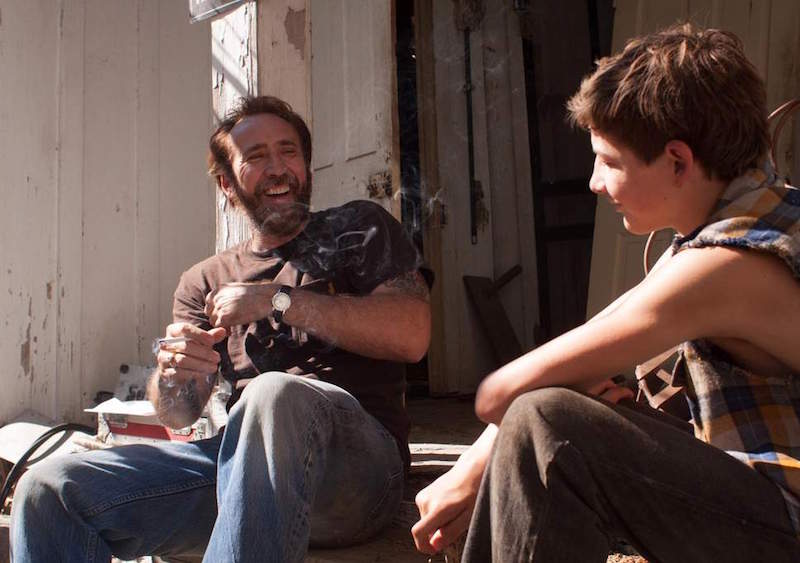The horror world lost another one of its stars this weekend when Kate O’Mara passed away at the age of 74. O’Mara was most well known to American audiences from her work on “Dynasty,” and British fans remember her best from her stint on “Doctor Who,” but horror nerds know her as a Hammer girl. Even though she only made two pictures for the legendary studio, she shined bright enough in them for fans to consider her an icon. She made both of her Hammer films in 1970, and while The Horror of Frankenstein may have the bigger name, O’Mara is at her beautiful best in The Vampire Lovers.

Set in 18th century Austria, The Vampire Lovers begins with Baron Joachim von Hartog (Douglas Wilmer from Jason and the Argonauts) on a mission to wipe out the Karnstein family of vampires. He is successful except for one: the lovely Mircalla (Countess Dracula’s Ingrid Pitt). Years later, Mircalla roams the countryside, preying on young women and slowly feeding on their blood over days until they die. After claiming the life of Laura (Pippa Steele from Lust for a Vampire), the daughter of the powerful General Speilsdorf (Hammer legend Peter Cushing, who was also in Star Wars), Mircalla changes her name to Carmilla and goes after one of Laura’s friends, Emma Morton (Madeline Smith from Theatre of Blood), who is looked after by the Governess Mademoiselle Perrodot (O’Mara). Carmilla and Emma become fast friends, and Emma soon starts to show signs of the same sickness that killed Laura. Carmella gets Mademoiselle Perrodot to fall under the spell of her charms as well, and the Governess begins to protect the girls’ friendship from intruders. Emma’s father, Roger (Cleopatra’s George Cole), goes for a doctor, but comes back with Baron von Hartog and General Spielsdorf instead. The men have to find a way to save Emma from the clutches of the Vampire Mircalla before it’s too late.

The script for The Vampire Lovers was adapted by screenwriter Tudor Gates (Fright, Barbarella) from the Sheridan Le Fanu story “Carmilla.” “Carmilla” had been adapted before, most notably by Carl Theodor Dreyer in Vampyr and again by Roger Vadim in Blood and Roses, but The Vampire Lovers has the Hammer stamp all over it. Director Roy Ward Baker (Asylum, The Vault of Horror) keeps all of the eroticism and lesbian overtones from the original story, but tosses in elements of traditional horror that make it more about the vampires than the lovers. The most terrifying sequences in the film revolve around Mircalla/Carmilla and her victims; the young women are subjected to harrowing dreams, surreal and majestic, that end with the victim screaming in the night while Carmilla visits a mysterious shadowy vampire leader, portrayed by John Forbes-Robertson from Lifeforce. It’s moments like these that remind the viewer that, although there are sexy vampires all around, The Vampire Lovers is still a horror film.

The seductive eroticism in The Vampire Lovers lends itself well to one of Hammer’s most favored traditions, that of the “Hammer Glamour” Girl. There are a bevy of Hammer beauties in The Vampire Lovers. The trio of Kate O’Mara, Ingrid Pitt, and Madeline Smith get most of the screen time, but the addition of Pippa Steele and Dawn Addams (The Vault of Horror) in early scenes really put the film over the top. Janet Key (Dracula A.D. 1972) and Kirsten Lindholm (Crescendo) both have small roles as well, rounding out the stunning cast. These lovely ladies take the lead in The Vampire Lovers, overshadowing even the iconic Peter Cushing.

Cinematographer Moray Grant (The Horror of Frankenstein, Scars of Dracula) shoots The Vampire Lovers with the same playfulness as many of the other seventies Hammer films. The film is shot with plenty of movements and motivated zooms that drag the viewer’s eyes to the same points as the actor’s eyes, so that the camera almost seems like another character in the film. The effect is magnified in places where the camera looks through keyholes or past burning candlesticks in the foreground to find the main subject. For the horrifying dream sequences, Grant uses heavy shadowing and mist to add a touch of eerie timelessness to the period settings. In addition, The Vampire Lovers is presented in beautiful Technicolor, a fact which only makes the film even more instantly recognizable as a Hammer Horror production.

The bright colors serve another purpose as well, as bright red blood flows freely throughout The Vampire Lovers. All of the effects are done practically and, quite frankly, very cheaply. Most of the visuals are done in-camera, with vampire transformations and neck bites and such being created with clever editing and elaborate makeup. There are a handful of magic show-type effects, including a couple of cool beheadings, that are obviously latex and mannequin heads, but they don’t look bad; they actually fit in with the purposeful cheesiness of the rest of the film.

Composed by the prolific Harry Robinson (The House in Nightmare Park, Prisoners of the Lost Universe), the music for The Vampire Lovers is typically Hammer. Robinson’s score is swirling and swelling, full of highly melodramatic symphonic orchestrations broken up by well-placed Psycho-esque violin stingers. It’s as over-the-top as the rest of the movie, and it suits the film perfectly, setting the audience up to laugh after they scream. The Vampire Lovers fires on all cylinders, and the soundtrack is an important part of the film.

Not wanting to pigeonhole herself as a horror actress, Kate O’Mara turned down a lengthy and lucrative contract with Hammer in order to pursue other projects. It’s a bit of a shame, as horror fans only got to see her in a handful of movies, but The Vampire Lovers is a pretty solid addition to any actress’ resume.

